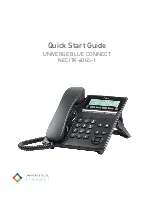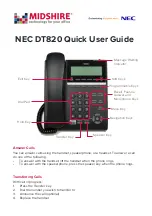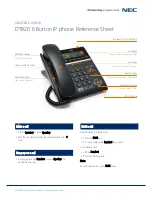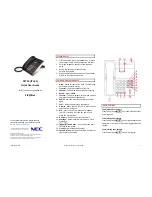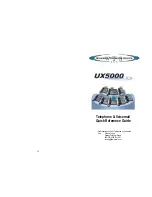
Copyright 2010-2015 Obihai Technology, Inc.
165
Consider another simple map
(xx.)
. After the user dials one or more digits, the DMP returns the accumulated digits
as a complete number when the long interdigit timer expires.
If we combine the last two maps into one:
(xx. | <1408>xxx xxxx)
. After the user dials 1 or more digits but
less than 7 digits, the DMP would return the accumulated digits as a complete number when the (long) interdigit timer
expires. As soon as 7 digits are entered, the DMP would return 1408 followed by the accumulated 7-digit when the
(short) interdigit expires. On the 8
th
digit and beyond, however, the DMP will consider the first rule only and return the
accumulated digits as is when the (long) interdigit timer expires.
Now add a S4 timer to the second rule:
(xx. | <1408>xxx xxxxS4)
. In this case the DMP behaves exactly the
same as the last, except that the short interdigit timer the DMP uses upon receiving the 7
th
digit is overridden by a 4s
timer; hence the user will have up to 4s instead of 2 to dial the 8
th
digit.
Forcing Interdigit Timeout With The Hash/Pound (#) Key
When dialing, user may force an interdigit timeout with a # key instead of waiting for the DMP to timeout its own long
or short timer. This is allowed as long as the # key does not match the current element of any PM rules. Otherwise the #
key will be consumed by the DMP instead of triggering a timeout.
Consider the digit map
(33xx.)
. If the user enters 333#, the DMP will return immediately with the number 333.
Now consider the digit map
(33xx.|333#1234x.)
. If the user enters 333#, the DMP will not return but continue to
wait for further input or its interdigit timer to expire. Note that the first rule “33xx.” is now in the MM state since the
digit # does not match “x”. The user may continue to enter 1234#, or 1234 and wait for a long interdigit timeout for the
DMP to successfully return 333#1234.
Invoke Second Dial Tone in Digit Map
You can tell the OBi to start a tone after a certain pattern of digits have been dialed by specifying the element
{t=<
tone
>} within a digit map, where <
tone
> is a 1 to 3-letter name of the tone to play. The tone will stop when the
next digit is entered. For example:
(**1{t=di2}(Msp)|**8{t=od}(Mbt))
tells the device to play Second Dial Tone when **1 is dialed, or play Outside Dial Tone when **8 is dialed.
Here is a full list of acceptable (case insensitive) values of <tone>:
bu = Busy Tone
cf = Call Forwarded Dial Tone
cm = Confirmation Tone
co = Conference Tone
cw1 – cw10 = Call Waiting Tone 1-10, respectively
di = Dial Tone
di2 = Second Dial Tone
fb = Fast Busy Tone
ho = Holding Tone
od = Outside Dial Tone
pr = Prompt Tone































